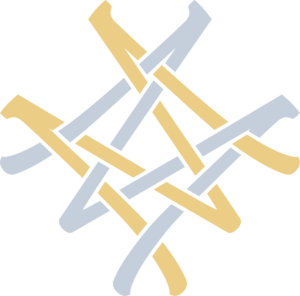N. Miklukho-Maklai (1846-1888) is known worldwide as the explorer of the island of New Guinea, but for a long time the traveler lived in Australia, the fifth continent.
On July 18, 1878, the Russian scientist first arrived in Sydney, Australia (the capital of New South Wales in Port Jackson) on the mail steamer “Somerset”. Because of the state of his health he had to postpone his travels in New Guinea and move to places with a more temperate climate. In addition to recovering, N.N. Miklouho-Maclay planned to explore Australian flora and fauna, and continue anthropological observations.
As soon as the traveler disembarked on the Australian coast, he saw a large, growing city with modern buildings, parks, museums, universities, cathedrals. On the distant fifth continent the Russian scientist was received well, but as a Russian citizen, N.N. Miklouho-Maclay first of all went to the honorary consul E.M. Paul, who was aware of his arrival, and later settled in his small cozy cottage.
Despite the abundant influx of immigrants, there was an acute shortage of specialists in Australia, not only skilled workers and engineers, but also scientists, so the arrival of the world-famous scientist was very well timed. Moreover, in Sydney they were well aware of N.N. Miklouho-Maclay, as the local press had been introducing readers to his travels and research for several years.
Only a few days after his arrival in Sydney, N.N. Miklouho-Maclay moved from the house of the Russian consul to the Australian Club – the most prestigious and famous institution in Sydney at that time. It was probably there where the traveler met William Macleay, a major landowner, biologist and politician who played an important role in the formation of Australian science. Having become acquainted with the visiting celebrity, W. Macleay tried to actively involve Nikolay Nikolaevich into the activities of the Linnean Society, the leading scientific organization of Australia at that time, which was founded by Macleay himself. At the end of his life, he donated his huge collections to the University of Sydney, where a special building, the Macleay Museum, was built for them.
On September 26, 1878, Nikolay Nikolaevich spoke at the first meeting of the Linnean Society with his report “The project of a zoological station for Sydney”. In his report the scientist traveler drew attention to the need to study marine organisms in or close to their habitat, spoke about his experience of interaction with biological stations, and expressed his belief that Sydney had favorable conditions for the establishment of the first zoological station in Australia. Just four days later, the members of the Linnean Society, including W. Macleay, recognized the proposal of the Russian scientist as deserving the most serious attention and the earliest possible execution, and called for fundraising for the construction of the station.
The Committee also recommended adopting the draft Charter of the station, drawn up by N.N. Miklouho-Maclay. This draft was almost the same as the one presented by Nikolay Nikolaevich at the Congress of Russian Naturalists in 1869. In 1881 N.N. Miklouho-Maclay, with the help of the Australian academic and governing figures, opened the first Biological Station in the southern hemisphere in Watson’s Bay (Sydney), which made a huge contribution to the development of Australian science and became a good example of international scientific cooperation.
While in Sydney, N.N. Miklouho-Maclay resumed comparative anatomical studies, including Australian Port Jackson shark, which he had long wanted to study (since his student expeditions to the Canary Islands). But it was inconvenient to conduct research in an Australian Club room. Here the traveler was again supported by William Macleay – he invited Miklouho-Maclay to live at his estate near Sydney, which had a large library with books and magazines mainly on zoology and other natural sciences, and numerous zoological collections. There was a laboratory pavilion nearby, equipped with microscopes and a set of necessary tools. However, the relationship between N.N. Miklouho-Maclay and W. Macleay gradually became colder and reduced mainly to mutually beneficial scientific contacts. The fact is that the Russian scientist held Darwinist views, while the Australian philanthropist was a conservative in the questions of origin and development of living beings.
Anyway, after a while Nikolay Nikolaevich moved to the Australian Museum, where he was also provided with a room and a study. Having plunged headlong into scientific work and the Biological Station project, Nikolay Nikolaevich did not forget about the research of the indigenous people of Oceania. In March 1879, the traveler left Sydney and went on his second trip to the island world of the South Pacific, after which, on May 12, 1880, he arrived in Brisbane, Australia, on the steamship “Korea”. The scientist initially intended to stay there for several days, but tempting prospects of a good rest and interesting research kept him there for eight months.
Arthur Palmer, the head of the Queensland Government, met Nikolay Nikolaevich in Brisbane. They had already met back in 1875 during a trip over the Malay Peninsula. At his instruction Miklouho-Maclay was provided with free travel on the local railroads, a room for laboratory works in the old premises of the Queensland Museum and photographic equipment. According to the archival documents, A. Palmer, at the request of the Russian researcher, ordered that the bodies of three criminals (a Chinese, a Philippine Tagalog and an Australian aborigine) be handed over to him immediately after the execution. Nikolay Nikolaevich carefully studied and photographed their brains and sent the corpse of the aborigine in a special conservative fluid to Berlin to Rudolf Vircow, a scientist and one of the founders of the cell theory in biology and medicine.
While in Queensland, N.N. Miklouho-Maclay also traveled deep into the Australian continent, where he conducted zoological and anthropological research as well as paleontological excavations. Among his discoveries were the bones of a giant extinct kangaroo, as well as Diprotodon, a giant marsupial the size of a rhinoceros with huge tusk-like incisors. These findings, highly appreciated by modern experts, are now stored at the University of Sydney.
The warm welcome given to Miklouho-Maclay many prominent Queensland figures and his passion for scientific research did not prevent him from seeing the other side of life in Australia: “The treatment of savages is the most inhumane <…> They are forced into the country, persecuted in every way, and killing a black is not even considered a crime” — Nikolay Nikolaevich shared his impressions in letters.
At the end of January 1881, the traveler returned to Sydney, where, as in Brisbane, he studied the brains of various human races, and having settled at the Biological Station, he also resumed his comparative anatomical study of the Australian fauna.
N.N. Miklouho-Maclay’s stay in Australia had a direct impact on his future fate, but it was not only about scientific research. Being acquainted with representatives of the scientific, business and political societies of Australia, N.N. Miklouho-Maclay sometimes visited the house of the Governor of New South Wales, Minister for Lands Sir John Robertson. At that time Nikolay Nikolaevich met J. Robertson’s attractive, intelligent and musically gifted daughter, 29-year-old Margaret, who was impossible not to fall in love with. She was a young widow. Margaret’s father asked N.N. Miklouho-Maclay for permission from Tsar Alexander III of Russia to marry her. After a twelve-year absence, N.N. Miklouho-Maclay returned to Russia. There he was welcomed as a national hero: all newspapers wrote about him enthusiastically, scientific societies organized meetings in his honor, where N.N. Miklouho-Maclay spoke about his scientific achievements. In order to obtain permission for marriage, N.N. Miklouho-Maclay went to the Crimea to meet with the Russian Emperor Alexander III. There, in the Summer Palace, N.N. Miklouho-Maclay was given the desired document. On his return to Australia, Nikolay and Margaret got married. The wedding took place on February 27,1884, at the bride’s parents’ manor “Clovelly” near Watsons Bay. After the wedding, in 1884, the newlyweds settled in “Wyoming” on the picturesque shore of Sydney. Their sons Alexander Nils and Vladimir Allan were born there. In 1887, Nikolay Nikolaevich with his wife and children came to Russia. Less than a year later, in April 1888, Miklouho-Maclay died in the Military Medical Academy hospital in St. Petersburg at the age of 41. To date, there are two branches of Miklouho-Maclay descendants: one, his Russian relatives, lives in Russia, the other, descendants of Nikolay and Margaret, lives in Australia. Some of the relatives have met each other and continue to maintain relations.
In total, N.N. Miklouho-Maclay lived in Australia for about seven years. The scientific research of the great Russian scientist resulted in numerous publications in scientific journals on zoology, geography and geology of Australia, as well as anthropology and ethnography of the indigenous population of the continent.
Upon his return to Russia in 1882, N.N. Miklouho-Maclay’s lectures in St. Petersburg made a real sensation among scientists and intellectuals.



